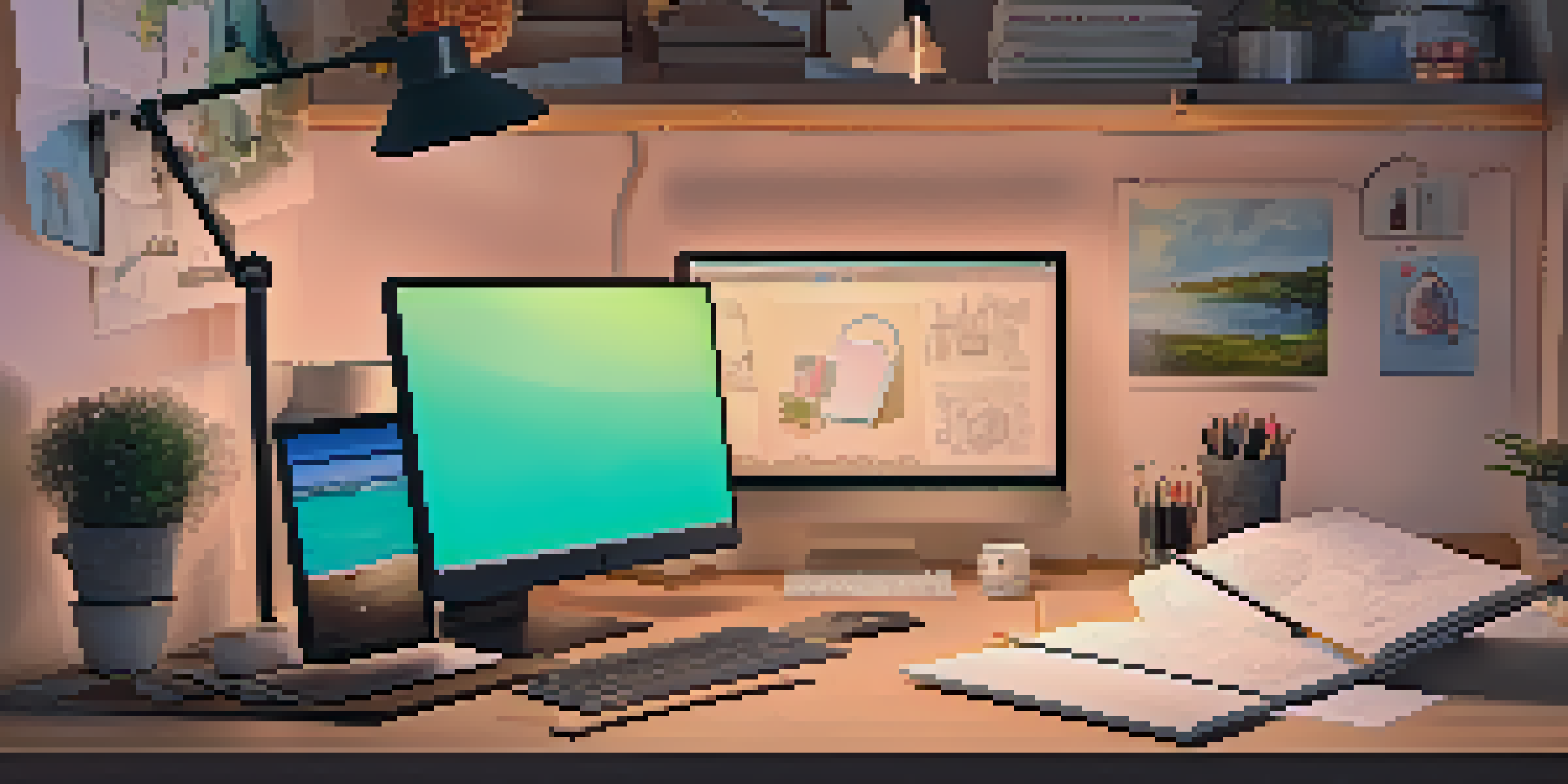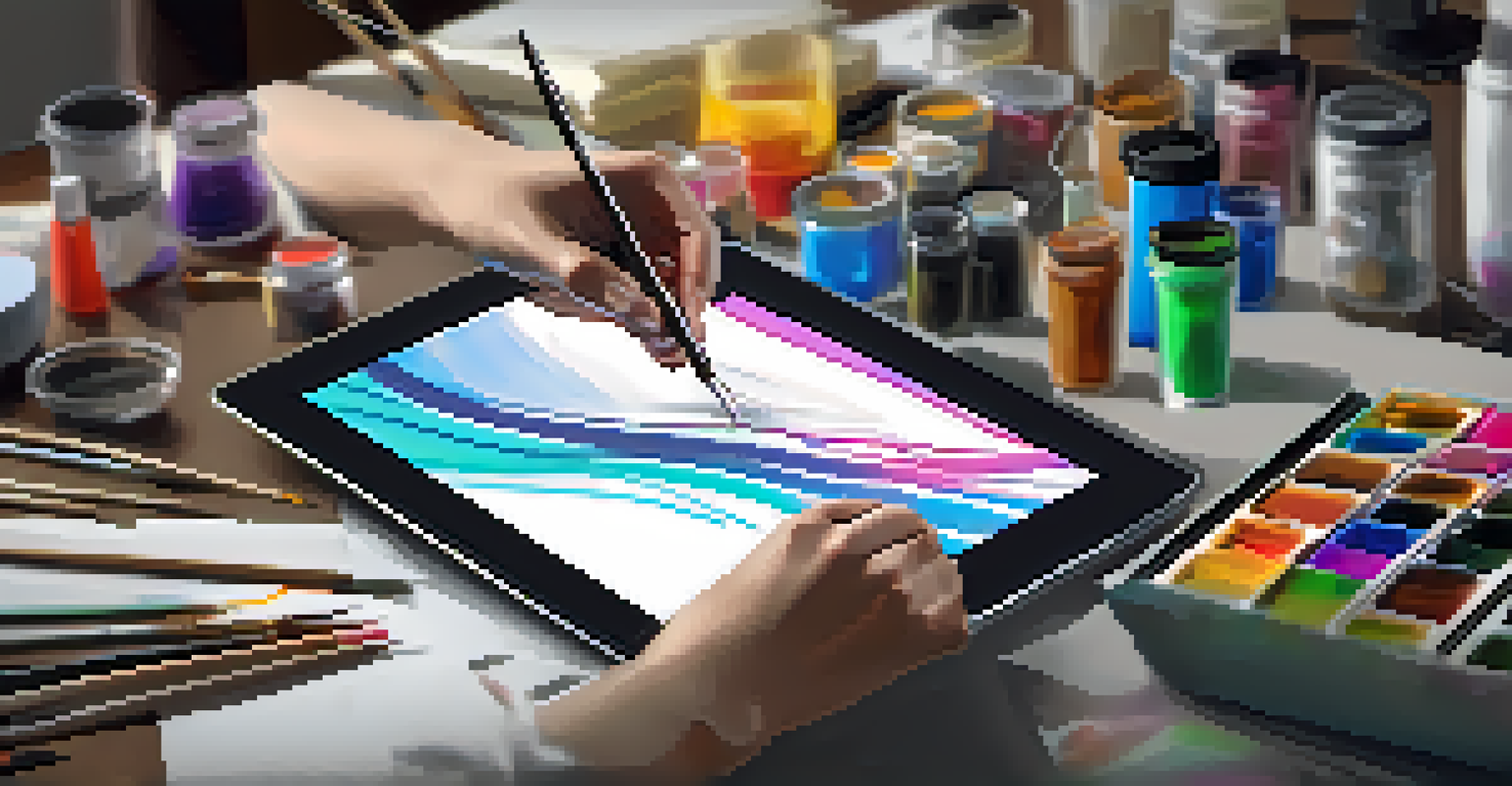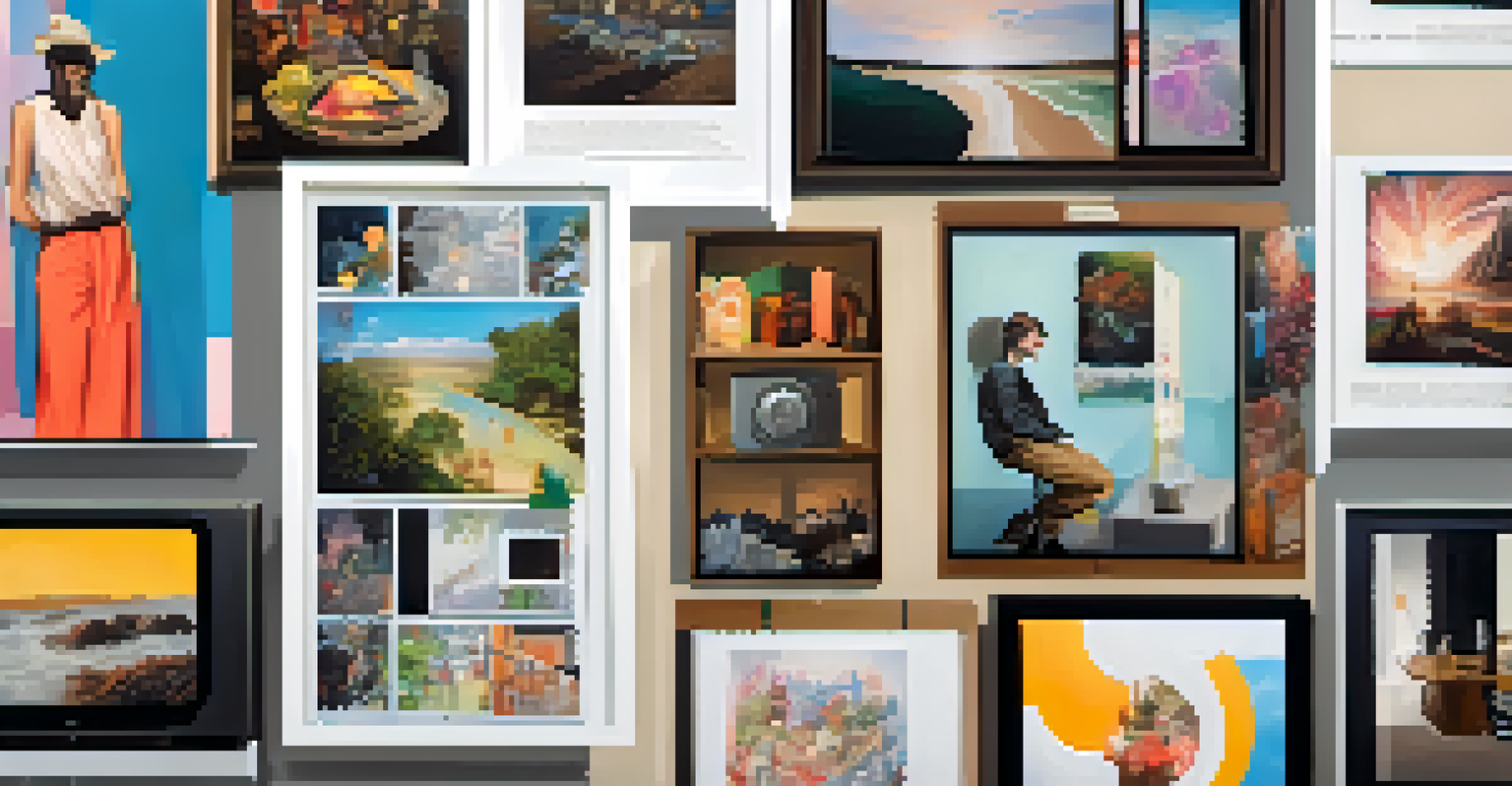From Sketch to Screen: Transitioning to Digital Art

Understanding the Shift from Paper to Digital
Transitioning from traditional sketching to digital art can feel overwhelming, but it’s an exciting journey. The digital canvas offers endless possibilities, allowing artists to experiment without the fear of making mistakes. Imagine being able to erase your errors with just a click—no more messy erasers or torn paper!
Every artist was first an amateur.
Digital art tools mimic traditional mediums, making the shift smoother than one might expect. Programs like Adobe Photoshop or Procreate come with brushes that feel similar to pencils, paints, and pastels. This means that familiar techniques can be translated into the digital realm, bridging the gap between your old and new methods.
As you explore this new territory, you'll discover unique features that enhance your creativity. Layers, for instance, allow you to work on different elements separately, making it easier to adjust your composition. Embracing these tools can expand your artistic repertoire and push your creativity to new heights.
Choosing the Right Digital Tools for You
Selecting the right software and hardware is crucial in your transition to digital art. Start with user-friendly programs that cater to beginners, such as Krita or Medibang Paint, before diving into more complex options like the Adobe suite. Finding what feels intuitive to you will make the learning curve much less daunting.

Hardware also plays a significant role in your digital art experience. A quality graphics tablet can make a world of difference, allowing for natural hand movements as you draw. Many artists prefer tablets that offer pressure sensitivity, which can replicate the feel of a pencil or brush on paper.
Transitioning to Digital Art
Moving from traditional to digital art opens up endless creative possibilities, allowing for experimentation without the fear of mistakes.
As you explore various tools, don’t hesitate to seek recommendations from fellow artists or online communities. There are countless resources available, including tutorials and forums, that can guide you in finding the perfect setup tailored to your artistic style.
Mastering Digital Techniques: Basics to Advanced
Once you’ve settled on your tools, it’s time to dive into the techniques that make digital art unique. Start with the basics, like understanding layers and using brushes effectively. These foundational skills will serve as the building blocks for more complex techniques down the line.
Inspiration exists, but it has to find you working.
As you grow comfortable, experiment with advanced techniques such as blending modes and clipping masks. These features can add depth and texture to your work, giving it a professional edge. Think of blending modes as different filters that can completely transform your colors and shadows.
Practice is key in mastering these techniques. Set aside time to create small projects, focusing on one technique at a time. Over time, you’ll find your confidence growing, and your unique style will begin to shine through in your digital creations.
Finding Inspiration in the Digital Space
Inspiration can often feel elusive, but the digital world is teeming with it! Social media platforms like Instagram and Pinterest are fantastic for discovering new artists and styles. Follow your favorite creators and keep an eye out for trends that resonate with you.
Online art communities also provide a supportive environment where you can share your work and receive constructive feedback. Platforms like DeviantArt and ArtStation allow artists to connect and inspire one another, creating a sense of camaraderie. This interaction can spark new ideas and motivate you to push your boundaries.
Choosing the Right Tools
Selecting user-friendly software and quality hardware is essential for a smooth transition to digital art.
Don’t forget to explore different genres and themes outside your comfort zone. Engage with various art styles, from surrealism to abstract, as this can lead to unexpected inspiration. Sometimes, a simple change in perspective can ignite a creative flame that propels your artistry forward.
Building Your Digital Art Portfolio
As you create more digital art, it’s essential to build a portfolio that showcases your best work. A well-curated portfolio not only highlights your skills but also tells your artistic story. Consider including a diverse range of pieces that reflect your growth and versatility.
When selecting pieces for your portfolio, focus on quality over quantity. Choose artworks that you are proud of and that demonstrate your unique style. Make sure to include notes about your creative process for each piece; this adds depth and helps viewers understand your artistic journey.
Don’t forget to showcase your work online! Use platforms like Behance or your personal website to display your portfolio to a broader audience. In today’s digital age, having an online presence is crucial for attracting potential clients or collaborators.
Embracing Feedback: Growth Through Critique
Feedback is a vital part of any artist's journey, and it is especially important when transitioning to digital art. Sharing your work with others can provide insights you might not see on your own. Embrace constructive criticism as an opportunity to grow, rather than a setback.
Join online forums or critique groups where artists exchange feedback on each other’s work. Engaging with a community can help you develop a thicker skin and an open mind. Remember, every piece of feedback is a stepping stone toward becoming a better artist.
Building and Sharing Your Portfolio
Creating a well-curated online portfolio showcases your best work and attracts potential clients or collaborators.
Additionally, seek out professional critiques from established artists or instructors. Their expertise can guide you in honing your skills and improving your techniques. Learning from others’ perspectives can illuminate new paths in your artistic journey.
Staying Motivated in Your Digital Art Journey
Maintaining motivation can be challenging, especially as you navigate the world of digital art. Setting small, achievable goals can help keep your creative juices flowing. Whether it’s completing a new piece each week or mastering a specific technique, having clear objectives can provide direction.
Additionally, create a routine that incorporates regular practice and exploration. Treat your art like a muscle that requires consistent exercise to grow stronger. Even on days when motivation wanes, spending just a few minutes sketching can reignite your passion.

Lastly, remember to celebrate your milestones, no matter how small. Acknowledge your progress, and take pride in your accomplishments. This positive reinforcement can act as a powerful motivator, propelling you further along your digital art journey.